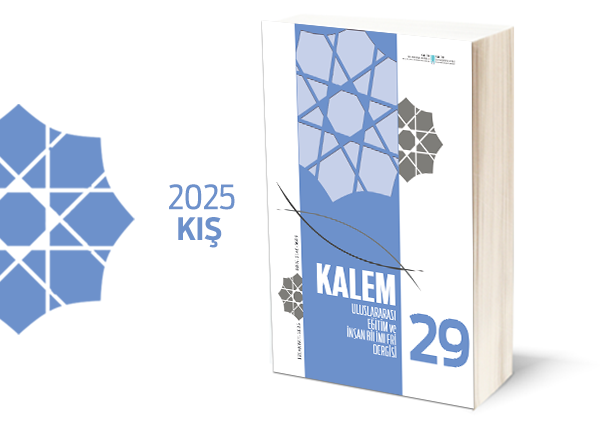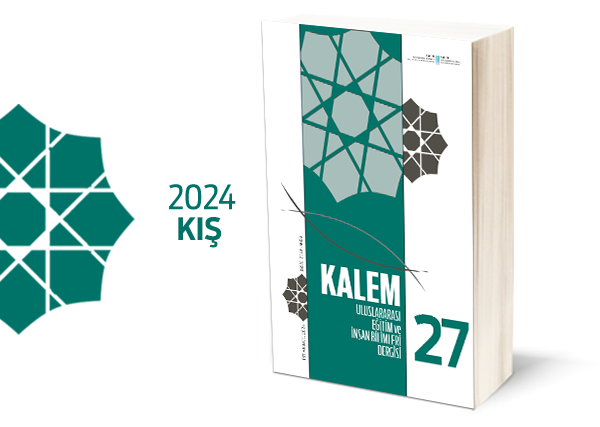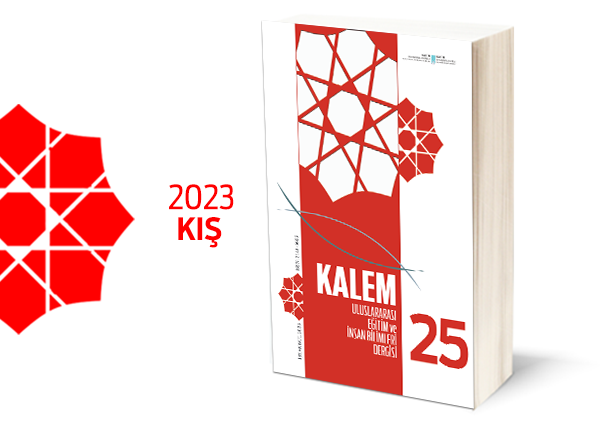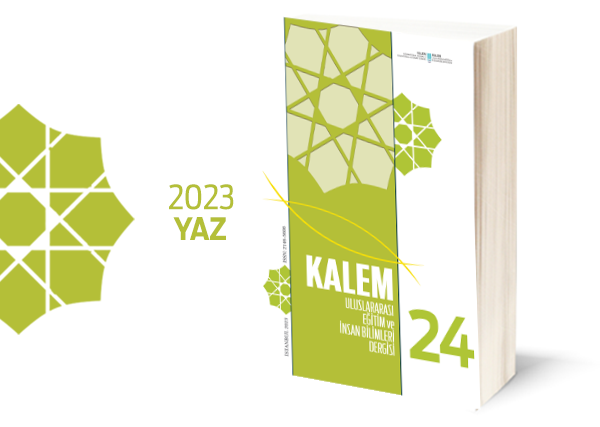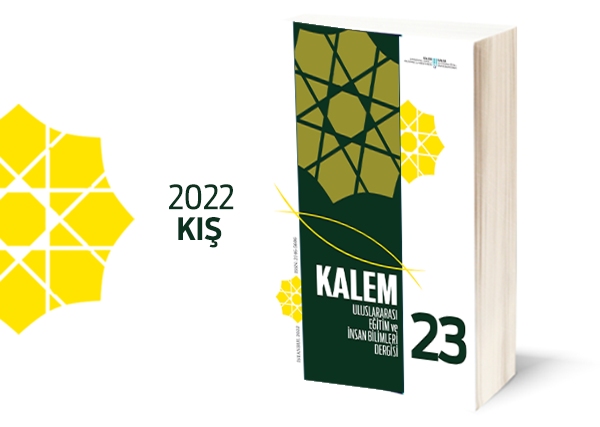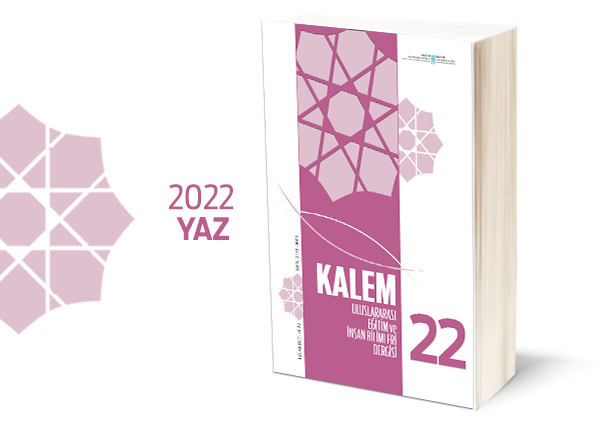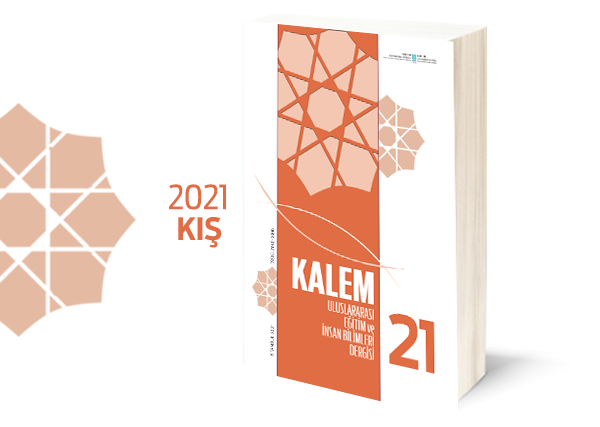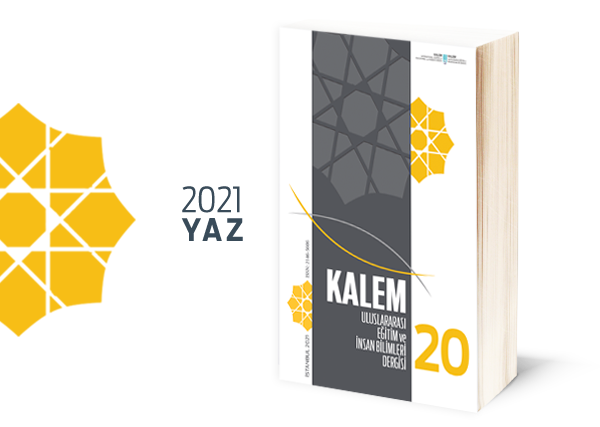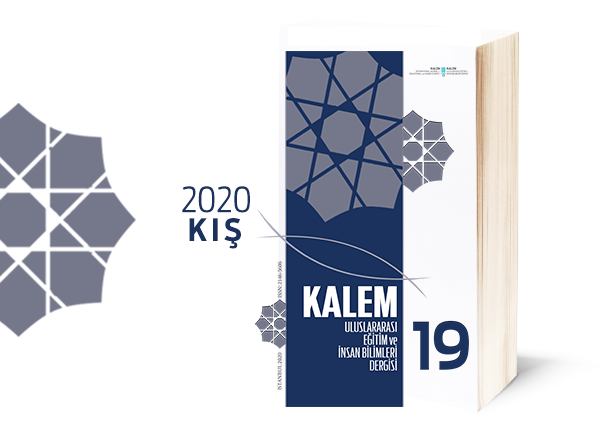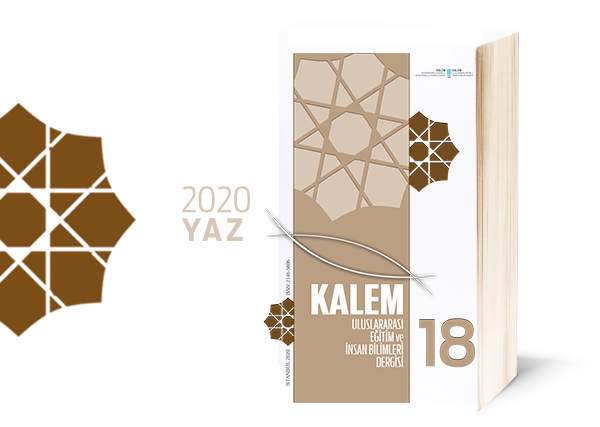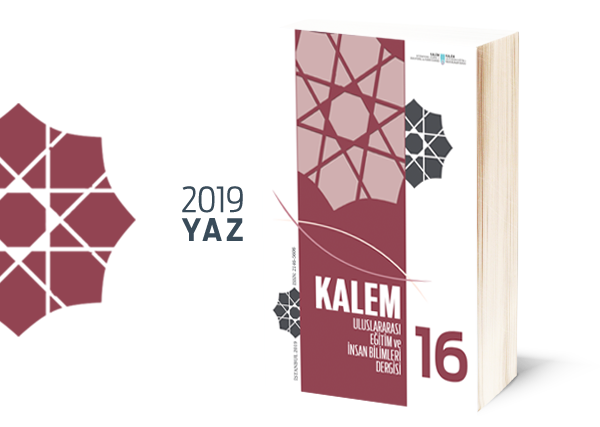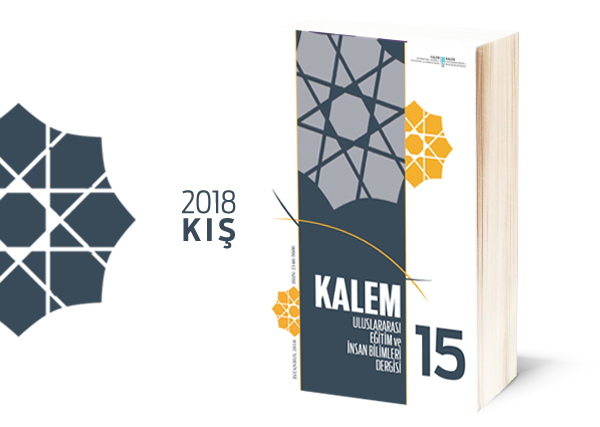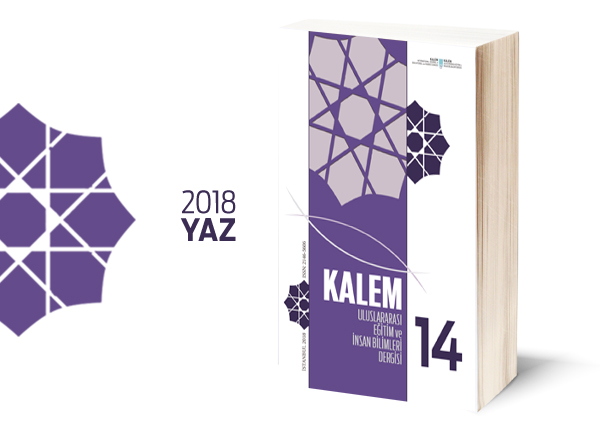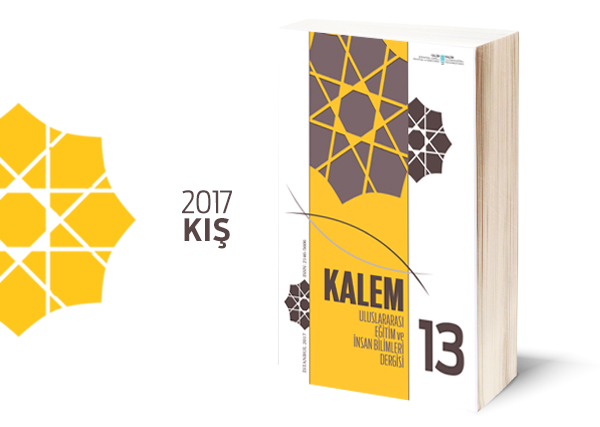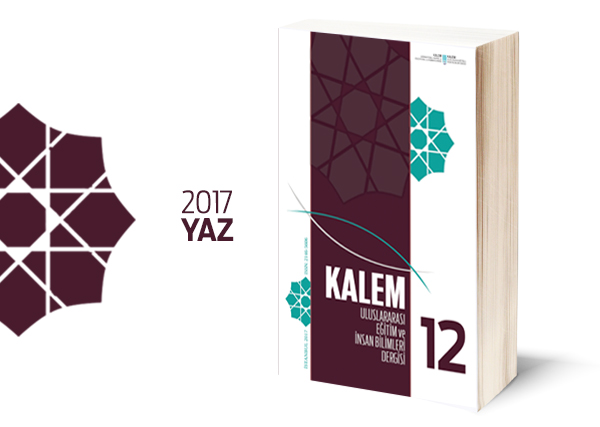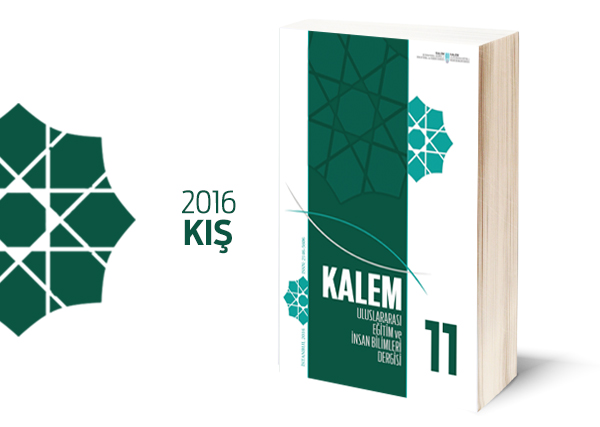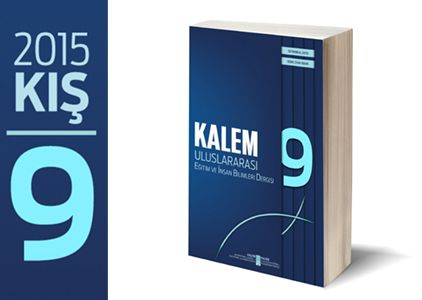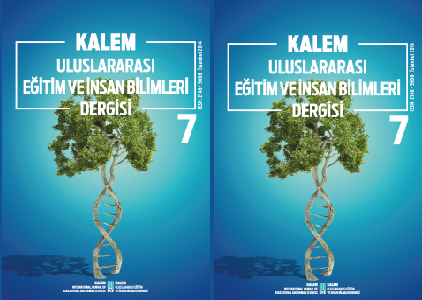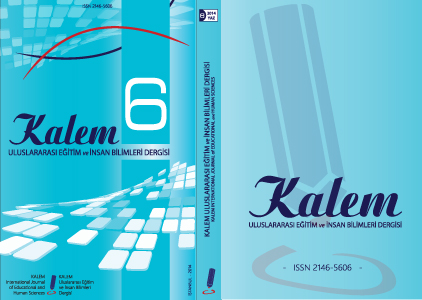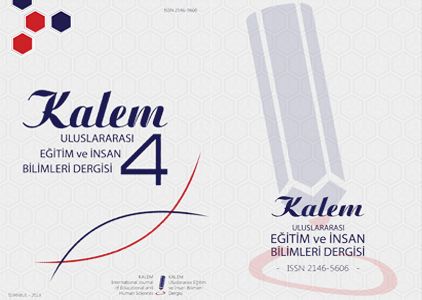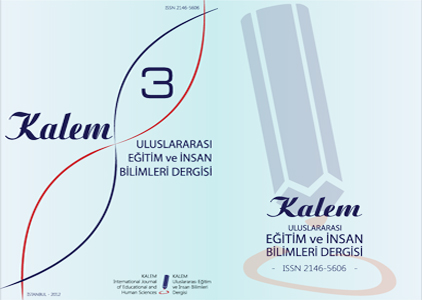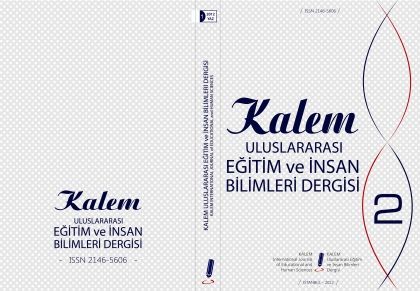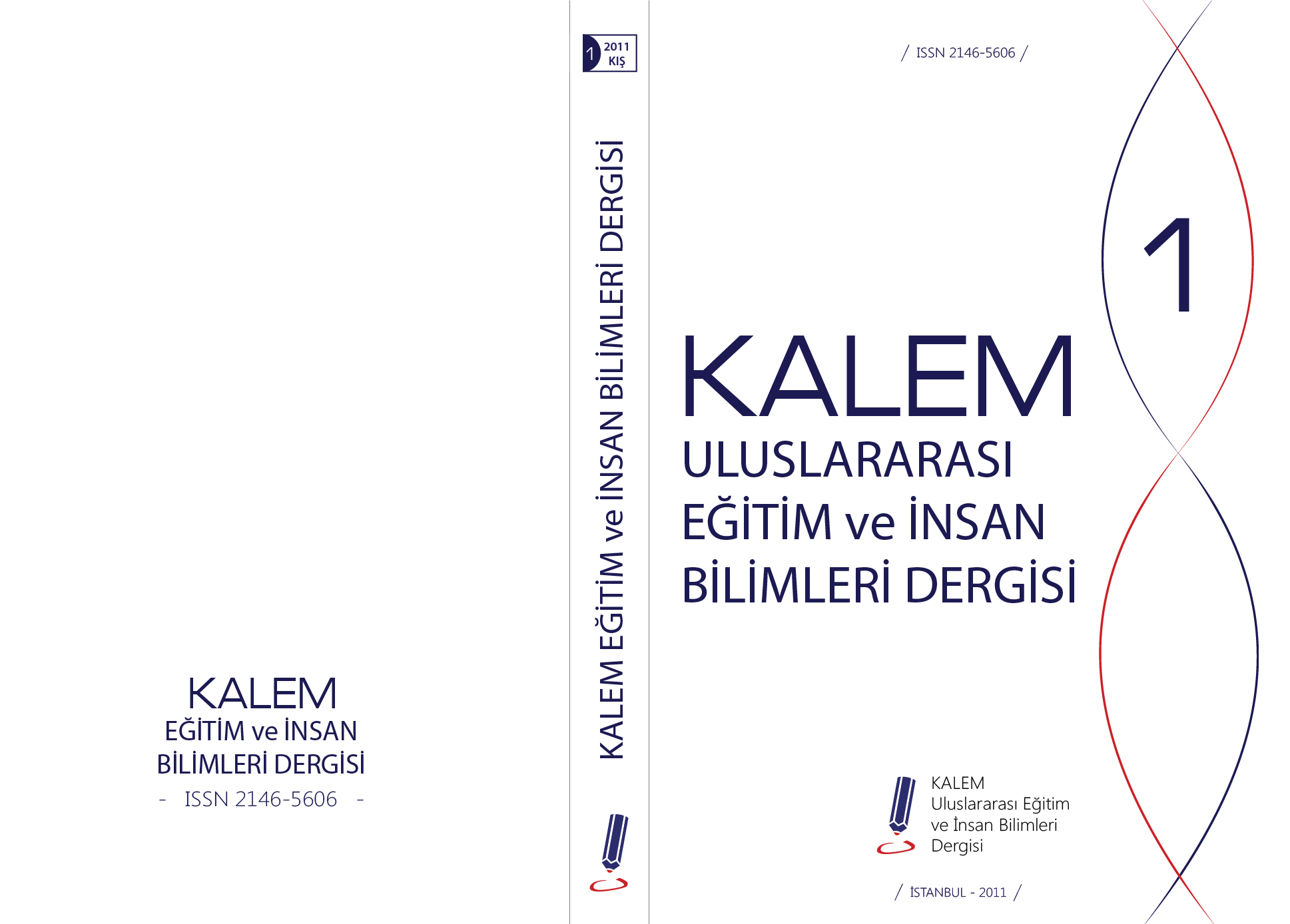Doç. Dr. Latife KABAKLI-ÇİMEN, Selman MACİT
Investigation on The Effect of Home Visits Made by Teachers on Students Undesired Behaviors in the Classroom
Abstract
|
Full Text
This research aims to examine the effect of home visits made by teachers on undesirable student behaviors. This research was conducted using the general survey model and experimental design. The study group was determined according to the convenience and purposeful sampling method. The research was conducted in the 2022-2023 academic year with a total of 6 teachers and 120 students from a private primary school in Istanbul, including three teachers who made home visits, 60 students who were visited, and three teachers who did not make home visits and 60 students who were not made a home visit. Research data was obtained using the Undesired In-Class Student Behaviors Questionnaire. In the analysis of data, independent samples t Test, Paired Samples t Test and for Repeated Measures (Repeated Measures ANOVA) were used. As a result of the research, a statistically significant difference was found between the post-test total scores of the experimental group and the control group. As a result, it has been determined that home visits cause a decrease in undesirable student behaviors. Therefore, it is recommended that home visits be increased to reduce undesirable student behavior.
Doç. Dr. Mustafa ÖZGENEL, Dr. Serkan YÜKSEL, Doç. Dr. Pınar AYYILDIZ, Prof. Dr. Metin ÖZKAN
A Policy Implementation Shaping Work Harmony in Schools in Turkey: Teacher Career Levels
Abstract
|
Full Text
Teaching career stages in Türkiye have been designated as three steps based on the legal texts since 2005. Howbeit, the said steps were not implemented in a continuous fashion until 2022 for distinct reasons. Finally, as of 2022, by law, these titles were entitled to teachers again based on several criteria such as years of seniority, success in a centrally held exam and similar criteria. In this context, the aim of the present research is to reveal teachers’ opinions regarding teaching career stages in depth. The study group of the research, for which case study, one of the qualitative research approaches, was deployed, consists of 10 teachers working in primary, secondary and high schools. A semi-structured interview form was utilized as the data collection tool in the research. Content analysis was employed with a view to analyzing the data obtained. In this framework, the opinions on teachers’ career stages were grouped under eight headings. As a result, it was concluded that a policy text was produced to respond to an accumulated need in Türkiye in 2022, but the reflections of the produced policy on the school followed a different course than planned. In this direction, it can be recommended that improvements and regulations should be made, in particular toward the areas of in-service training, examinations, and towards the responsibilities of teachers who receive the titles in question. Further, in light of our findings, it can be pinpointed that teaching career stages should be transformed into a model that emphasizes performance, professional development and effectiveness, taking into account Türkiye’s unique cultural context.
Dr. Eren Murat DİNÇER, Prof. Dr. Halil EKŞİ
Erkeklerde Problemli Porno Kullanımının Psikolojik Yapısı: Betimsel Fenomenolojik Bir Araştırma
Abstract
|
Full Text
Bu çalışma, Türkiye’deki erkekler arasında problemli pornografi kullanımının psikolojik etkilerini Giorgi’nin betimsel fenomenolojik yöntemi kullanarak incelemektedir. Araştırma, katılımcılarla yapılan derinlemesine, yarı yapılandırılmış mülakatları içermektedir. Katılımcıların pornografi ile ilk deneyimlerini, kullanımın evrimini ve problemli etkileşimlerinin özelliklerini keşfetmiştir. Bulgular, genellikle merak ve akran etkisiyle yönlendirilen erken maruz kalmanın, duygusal stresle başa çıkma mekanizmasına geçiş yaptığını ve bu durumun sorunlu kullanıma doğru bir kaymayı vurguladığını ortaya koymaktadır. Kültürel ve dini inançlar, kullanıcıları önemli ölçüde etkilemekte ve ahlaki çatışmalar, özellikle dini bireyler arasında yoğun suçluluk ve utanç duygularına katkıda bulunmaktadır. Temel psikolojik etkiler arasında sosyal izolasyon, ilişki zorlukları ve algılanan bağımlılık bulunmaktadır. Bu çalışma, problemli pornografi kullanımını ele almak için kültürel olarak duyarlı yaklaşımların gerekliliğini vurgulamakta ve kişisel, sosyal ve kültürel faktörler arasındaki karmaşık etkileşimi anlamanın önemini önermektedir. Belirlenen olumsuz etkileri hafifletmek için kişiye özel psikolojik müdahaleler ve iletişim stratejileri önerilmektedir.
M. Fatih DEMİRDAĞ
Meaning Construction Related to Natural Stones
Abstract
|
Full Text
Stones, which are handicraft materials that take shape in human hands and show some variety within their own structure, are material elements that are a document in the development of the cultural structure of a society. Stones since archaic civilizations; It has been effective and important for people, especially for purposes such as asylum, protection, weapons, magical and religious elements and expression, healing. Important cultic and symbolic meanings have been found in almost every religion, folk belief, mythology or legend about stones. Anthropologically, we see that the use and beliefs of stones differ in relation to the cultural structures of societies, but they are similar from place to place. In this context, there have been periods when religious beliefs and customs, information learned from the family and hearsay led people to seek healing from stones. Our study is based on a literature research on the sociology of religion. As a matter of fact, individual meaning worlds of belief and individual belief mechanisms as a result of these meaning worlds are considered important for the sociology of religion, which aims to research issues such as religion, belief, culture, customs and traditions. In this context, the science of mythology was also used in the research. Our research consists only of literature research. We believe that the study will be a resource for those who will study this subject and conduct field studies in the future.
Doç. Dr. Ejder ÇELİK
The New Face of the Changing Society Metaverse and Its Possible Effects on Education
Abstract
|
Full Text
It is seen that technology has started to design the social system at the level of consciousness at the stage of digitalization. This widespread influencing power makes itself felt clearly on the education system today. The latest digital developments that take place under the name of Metaverse should be followed carefully and the effects they can have on different institutions of the society should be started to be analyzed. In this sense, it seems necessary to understand the connection of developments with education at an early stage and to analyze the opportunities it will offer and the problems it will create in order to bring the education system to an advantageous position in the face of changes. Digital technology has become a part of life in the official and public sphere for over twenty-five years. Ongoing interactions on the Internet are relevant to all social institutions. The fact that the economic institution has a significant impact on other social institutions in modern industrial societies has also shown itself in the new steps of digital technology. As a matter of fact, the change in the web infrastructure and the decentralized internet structuring in the recent period have shown themselves again in the financial leg of the economy with the block chain system. It is clearly seen that Metaverse, the new stage of the internet system, will be in a position to force the education system to change in a period of ten years
Dr. Filiz ERATA, Prof. Dr. Saide ÖZBEY
Alternative Program in Psychological Well-being: Applications of Aistear Program in Preschool Education
Abstract
|
Full Text
In the study, it was aimed to examine the effect of the “Aistear Education Program” on the psychological well-being of preschool children. In the quantitative dimension of the research, pretest-posttest, retention test and experimental model with control group were used and in the qualitative dimension, the case study model was used. The study group of the research consists of 60 children in the age group of 5 who attend official kindergartens affiliated to the Trabzon Provincial Directorate of National Education in the 2021-2022 academic year. As a result of the pre-test analyzes performed before the program, three groups were determined, one of which was the experimental group and the other two were the control group, which did not differ significantly between them and had a low score difference. “General Information Form” in order to obtain information about children in the study, “Social Emotional WellBeing and Psychological Resilience Scale for Preschool Children (PERIK)” in obtaining quantitative data, “Researcher Observation Notes” “Parent Interview Form” in order to obtain qualitative data and “Teacher Interview Form” was used. In the research, while the Aistear program was applied to the experimental group, the teachers’ routine daily training program was applied to the control group children. As a result of the research; it was determined that the Aistear education program created a statistically significant difference in the psychological well-being levels of the experimental group children compared to the control group. According to the qualitative analysis results, the parents and teacher of the experimental group; stated that the education program applied positively contributed to the psychological well-being of children. Researcher observations also support the quantitative findings and parent-teacher views. In the light of these findings, it is thought that the philosophy of the Aistear program can contribute significantly to the preschool education program in the program development process of the preschool education program.
Dr. İsmet ŞAHİN
Development of an Intuition Scale as an Extrasensory Perception: Validity and Reliability Study
Abstract
|
Full Text
This research focuses on the concept of intuition as an extrasensory perception, somatic sign, and feeling. Participants were asked to answer questions about their beliefs and trust in this intuition, its functionality in their lives, its relationship with emotionality and emotional literacy, and their experiences as a sense of forethought in order to develop a valid and reliable intuition scale. For the pre-application, 33 items were written in 4 basic dimensions that were thought to serve this purpose. As a result of the exploratory factor analysis conducted with the data obtained from 227 people as a result of the pre-application, a 21-item scale measuring 5 dimensions was obtained. “Trust/belief dimension in intuition”, “Taking intuition as a guide/functionality dimension”, “Social functionality of intuition/hunch dimension”, “Emotionality dimension in intuition” and finally “The Expression Dimension of Intuition as Coincidence/Luck”. The eigenvalue for each dimension is above 1 and the total variance representation rate is higher than 5%. The entire test consists of 21 items and measures 68.61% of the total variance. In order to test the validity of the factor structure of the 21-item intuition scale, first and second-level confirmatory factor analyses were calculated using the data obtained from 359 samples. The structural models and fit indices obtained were above the acceptance limits specified in the literature and statistically significant. The Cronbach’s Alpha reliability coefficients calculated for the sub-dimensions of the final version of the scale and the entire scale were found to be well above the acceptable lower limit value. All findings indicate that this scale is a valid and reliable tool for measuring intuition as an extrasensory perception and somatic sign.
Belgin BAĞRIAÇIK, Yaren Esma SUNTUR, Ece Nehir EVREN, Yağmur GİRMEN, Prof. Dr. Ahmet Serkan ECE
Values Education within the Scope of Social Responsibility Projects with Special Talented Students: The Case of Children’s Homes Site
Abstract
|
Full Text
Not all children have equal conditions in society. [Some children grow up at home with their parents in a warm home environment, while some children have to grow up under the protection of the state with the state’s facilities. This project aims to bring together children between the ages of 7 and 12 in the children’s homes site with the students of the specially talented music department, as well as to enable children to work together under musical activities and to influence each other positively in terms of values. A case study was conducted from qualitative research methods. Data were collected with semi-structured questions in interview technique. Data analyses were prepared with content analysis method. The Gönüller Bir Team was formed from the students of the specially talented music department. Every week, the Gönüller Bir Team had a conversation with the children living in the children’s homes site about a value, and then a children’s song about that value was taught. At the end of the 8-week period, a concert was organised with these works. As a result of this work, values such as respect, love, sharing, self-expression, excitement, self-confidence, happiness and togetherness were acquired by children living in children’s homes. It has been determined that this process has provided the Gönüller Bir Team with values such as empathy, respect, co-operation and sense of responsibility. It was stated by the trainers of the Children’s Homes Site that this project helped the children living in the children’s homes site to develop self-esteem, awareness, helpfulness, helpfulness and self-confidence
Dr. Öğr. Üyesi Şeyda YILDIRIM PARLAK, Uzm. Cemil PARLAK
Examining Family Education Programs Prepared by Special Education Teacher Candidates
Abstract
|
Full Text
The content of the Family Training in Special Education course in the special education teacher curriculum prepared by the Council of Higher Education in Türkiye includes the preparation, implementation and evaluation of family training programs. In this context, the aim of the study was to examine the family training programs and handbooks prepared by special education teacher candidates. The dataset of the research consists of family education programs and handbooks prepared by 25 special education teacher candidates at a university in Gaziantep. The study was designed with a qualitative research method and the data was collected with the document review technique. A Family Education Program Review Form was developed for data collection. During the data collection process, family training programs and handbooks were examined and notes were made on the form in accordance with the determined criteria. Using descriptive analysis, it was determined that most of the family training programs were prepared in accordance with the family training program preparation flow, concept teaching and daily life skills were mostly targeted, and the resources used in the program preparation process were mostly Turkish resources. In addition, it was observed that most of the handbooks had appropriate sections, visuals were used but most of them were on the main section pages, diagrams and tables were used minimally, and the teacher candidates prepared them using many concepts and terms. Suggestions are given in line with these findings obtained in the research.
Dr. Ayben NALBANTOĞLU, Prof. Dr. Ali Sinan BİLGİLİ
An Application for the Use of Evidence-Based Learning Approach in the Acquisition of Historical Thinking
Abstract
|
Full Text
This study aims to reveal the reflections of the evidence-based learning approach in acquiring historical thinking skills. The research was carried out using the “Action research” method. Document review was used as the data collection method. The aim of the research is to develop students' historical analysis and interpretation and historical research skills. In this regard, learning activities based on the evidence-based learning approach developed for the first three outcomes of the unit named “World Power Ottoman 1453-1595” in the 10th grade History course curriculum were implemented for 4 weeks. “Historical thinking skills inquiry source study”, which is the data collection tool of the research, was applied before and after the teaching process. Descriptive analysis method was used to analyze the data. In the research, it was determined that the evidence-based learning approach in the acquisition of historical analysis and interpretation and historical research skills contributes to the development of students' ability to think from multiple perspectives and in context, and to the development of their interpretation skills based on historical evidence
Dr. Öğr. Üyesi Ümran ATABAŞ, Prof. Dr. Gönül SAKIZ
Fourth Grade Students’ Perceptions about STEM Practices in Science Course
Abstract
|
Full Text
The purpose of this research was to examine students' opinions based on their experiences with STEM education applied in primary school fourth-grade science course. The research was designed using phenomenological research design as one of the qualitative research methods. The participants were 10 fourth grade students, 2 female and 8 male, studying at a public school in Beyoğlu district of Istanbul. The lesson plans prepared using STEM approach was implemented in science class. The duration of the implementation was nine weeks and 28- course hours. Interviews, questionnaires toward evaluations, and observation notes were used as data collection tools. The data was analyzed using content analysis. Findings showed that the part that most attracted students’ attention was the construction of solar-powered vehicles; students felt happy during the STEM activities, and they had the most difficulties while working within groups. They reported that the difference of science lessons integrated with STEM activities from other lessons was that they allowed students to practice more. In addition, students stated that the STEM education could contribute to the development of imagination the most; and, there might be difficulties in some skills such as cutting, gluing, and cable tying, which are necessary during product development. It has been determined that students’ views about the courses conducted with STEM approach are mostly positive supported by the data provided by the questionnaires and observer notes
Hande ŞENEL, Dr. Öğr. Üyesi Tuğba TURGUT
Investigating the Relationship Patterns Between Codependency, Differentiation of Self and Emotion Regulation Difficulties in Emerging and Young Adults
Abstract
|
Full Text
Codependency, characterized by dysfunctional and potentially psychopathological behavior patterns in interactions with others, is thought to affect people of all ages. Codependency limits the lives of both the individual experiencing the addiction and the person to whom they are addicted. However, it is especially seen as a risk factor for emerging adults and young adults due to their developmental stages. Therefore, this study aims to examine the relationship between copendency, differentiation of the self and difficulties in emotion regulation in a sample of emerging and young adults. Additionally, codependency, differentiation of self, and difficulties in emotion regulation were examined in terms of some demographic variables. The research, was conducted using a correlational design. The data were collected both face-to-face and online. The sample of the study consists of 507 emerging and young adult participants aged between 18 and 45. To examine determined objectives of the study, the following data collection tools were used: Demographic Information Form, Spann-Fischer Codependency Scale, Differentiation of Self Inventory-Short Form and Difficulties in Emotion Regulation Scale. The data were analyzed using SPSS 23.0 and the Process Macro extension. Findings showed that the levels of self-differentiation and emotion regulation difficulties of emerging and young adults were related to the levels of codependency. The model established in the study indicated that difficulties in emotion regulation play a partial mediating role in the relationship between differentiation of self and codependency in emerging and young adults.
Uzm. Bahar OKTAY, Prof. Dr. İkbal Tuba ŞAHİN-SAK
Examination of the Relationship Between Preschool Teachers’ Beliefs on Developmentally Appropriate Practice and Their Job Satisfaction
Abstract
|
Full Text
In this study, it was aimed to examine the relationship between preschool teachers' beliefs on developmentally appropriate practice and their job satisfaction. The population of the study consisted of preschool teachers working in independent kindergartens and nursery classrooms in the primary schools in Van province and its districts while the sample consists of 400 preschool teachers selected from this population by random sampling method. The Personal Information Form, the Developmentally Appropriate Practice Teacher Beliefs Scale (DAP-TBS) and the Job Satisfaction Scale were used as data collection tools. The data was analyzed through independent samples t-test, one-way analysis of variance and Pearson's Product-Moment Correlation. Analysis showed that preschool teachers' beliefs on developmentally appropriate practice and their job satisfaction were high. When the relationship between their beliefs about developmentally appropriate practice and their job satisfaction was examined, a positive low-level significant relationship was found between the preschool teachers' beliefs on developmentally appropriate practices and their professional satisfaction
Uzm. İpek ÖZ, Doç. Dr. Hüseyin ATEŞ, Prof. Dr. Abdullah AYDIN
Factors Affecting Science Teachers' Instructional Activities in Distance Education Process
Abstract
|
Full Text
The aim of the study is to investigate the factors affecting teachers' intentions to use distance education tools in science education using three models/theories. Thirteen hypotheses were tested with the participation of 199 science teachers working in a mid-sized city in the study. The data of the study were obtained by adapting the scales developed by Sungur-Gül and Ateş (2021) and Ateş and Garzón (2023) to the research. The measurement model was tested first, followed by the structural model using the data obtained from the study. As a result, the results of the structural equation modeling (SEM) showed that the proposed model of the current study had acceptable fit indices. The SEM results indicate that attitude, subjective norm, perceived usefulness, price value, concentration, perceived satisfaction, habit, and perceived behavioral control have a significant impact on the intention to use distance education tools. Therefore, all hypotheses in the model were statistically supported in understanding the determinants of using distance education tools. As a result, the study confirmed the effectiveness of three different theories along with additional variables in understanding the intentions of science teachers to adopt distance education tools in the Turkish context. The study has important implications for researchers, educators, education stakeholders, and designers developing distance education practices.
Dr. Öğr. Üyesi Gaye Zeynep ÇENESİZ, Prof. Dr. Faruk GENÇÖZ
What to Do to Be Healthier? Factors Affecting Eating Behavior Regulation
Abstract
|
Full Text
This study aims to examine the relationships between individuals' problematic eating behaviors, self-esteem, appearance self-esteem, personality traits, eating regulation motivations, and socio-cultural attitudes towards appearance. In particular, it explores differences in these variables based on gender and physical appearance perception. Data collection tools used in this study include the Demographic Information Form, Eating Attitudes Test, Rosenberg Self-Esteem Scale, Appearance Self-Esteem Scale, Basic Personality Traits Inventory, Regulation of Eating Behavior Scale, and Sociocultural Attitudes Towards Appearance Questionnaire. The results revealed that women scored significantly higher than men in extraversion, agreeableness, autonomous motivation, and problematic eating attitudes. On the other hand, men scored higher than women in openness to experience, and negative valence. Furthermore, individuals who perceived themselves as overweight had lower levels of conscientiousness and appearance self-esteem compared to those who perceived themselves as normal or underweight. Controlled motivation and problematic eating behaviors were found to be higher in those who perceived themselves as overweight. This study highlights the importance of increasing autonomous motivation in managing weight and eating behaviors, emphasizing the reduction of reliance on others' evaluations. It suggests that future research should involve larger and more diverse samples to further explore these relationships.
Dr. Öğr. Üyesi Ganime Esra SOYSAL, Prof. Dr. Arzu ÖZCAN-İLÇE
The Effect of Preoperative Education on Nursing Students' Perceived Competence: Implementing a Case-Based Learning Model
Abstract
|
Full Text
The objective of this experimental study is to ascertain the impact of preoperative education on the perceived competence of nursing students, with the case-based learning model being employed to facilitate this process. The study sample comprised a total of 164 students, 86 of whom were in the control group and 78 of whom were in the case group. Following the administration of preoperative patient preparation training to both groups by the same instructor, the casebased learning model was then applied to the case group. Following the training and subsequent implementation, the Perceived Competence Scale for Preoperative Nursing Care and the satisfaction scale were administered to all students. The mean age of the students was 20.4 ± 1.3 years, 83.5% were female, and 72.0% had completed secondary education. The mean score for the Perceived Competence Scale for Preoperative Nursing Care was 95.8±14.3 in the case group and 91.6±12.9 in the control group. The score for the case group was found to be statistically significantly higher (p≤0.05). It was observed that the implementation of preoperative education led to an enhancement in the perceived competence of the students who underwent case-based learning. Furthermore, the competence perceptions of the students who adhered to current publications and demonstrated sensitivity to ethical principles were also found to be elevated (p≤0.05). In the case group, 91.1% of the students expressed satisfaction with the case-based learning education they received. As a result, the application of the case-based learning model can be used as an effective method to improve students' competences and is recommended to be included in educational programmes.
Dr. Öğr. Üyesi Ahmet Yasin ŞENYURT
Mortality Salience and Health Behaviors: The Moderating Role of Religiosity
Abstract
|
Full Text
This study investigated the effects of mortality salience on individuals’ intentions to engage in health-promoting behaviors, and whether religiosity moderates this relationship. This study aimed to investigate the influence of death awareness on health behaviors and the potential moderating role of religious beliefs in this relationship, within the framework of Terror Management Theory (TMT) and its extension, the Terror Management Health Model (TMHM). A quasi-experimental design was employed with 80 participants randomly assigned to either a mortality salience (MS) or a dental pain salience (control) condition. Participants completed the Religious Lifestyle Scale and then responded to the Healthy Lifestyle Behavior Scale II. T-tests and moderation analyses were used to assess group differences and the moderating role of religiosity. Findings revealed that participants in the mortality salience condition reported significantly higher intentions for health responsibility, physical activity, and nutrition compared to the control group. Moderation analyses indicated that religiosity significantly moderated the effect of mortality salience on physical activity and overall health behavior; the effect was strongest among participants with low religiosity and diminished among those with high religiosity. These results suggest that mortality salience may serve as a psychological trigger for health behavior change, particularly among less religious individuals. In contrast, religiosity appears to act as a buffer, reducing the motivational impact of death awareness. The study contributes to the growing literature on existential influences on health behavior and highlights the importance of religious belief in shaping individual responses to mortality-related cues.
Dr. Öğr. Üyesi Merve MAMACI
Pet-Friendly Workplaces: A Hypothetical Case-Based Application Guide Within the Context of Kurt Lewin’s Change Theory
Abstract
|
Full Text
As an increasing number of workplaces worldwide adopt pet-friendly workplace practices, empirical research and implementations in this field remain considerably limited in Türkiye. The purpose of this study is to draw attention to the topic within the Turkish context by investigating the potential benefits of having pets in the workplace for employees and organizations through the lens of Kurt Lewin’s three-stage change model, and by presenting an application guide grounded in a conceptual framework. Within the scope of the present study, a conceptual framework is introduced to explore the notion of pet-friendly workplaces, and the individual and organizational outcomes associated with related practices are discussed. In addition, barriers to application are identified. Furthermore, studies conducted in Türkiye over the past five years are reviewed in order to outline the current state of the field and highlight gaps in the existing literature. In this regard, the study offers a guide that sheds light on the practical dimension through a hypothetical case grounded by theoretical discussions. The originality of this study lies in its investigation of pet-friendly workplace practices from both employee and organizational perspectives, thereby pointing to the potential contributions that such practices may offer and providing a meaningful basis for discussion regarding workplaces in Türkiye. Finally, the study addresses potential directions for future empirical research, emphasizing that the existing gaps in the field present significant opportunities for new scholarly work. Keywords: Pet-friendly workplaces; Pet; Employee well-being; Kurt Lewin’s change model; Organizational change.
